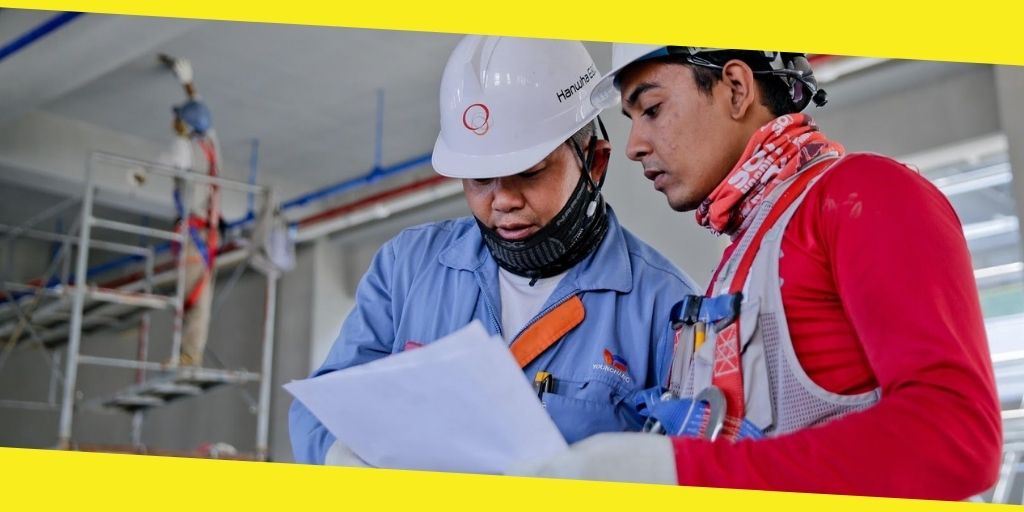Leadership Tools for the Facility Manager
This post was last updated on April 30th, 2021

If you’re a facility manager, you’ve got a lot on your plate ensuring the whole facility’s safety, functionality, and efficiency. This role entails considering lots of data to allocate resources, assess risks, and properly implement new technologies.
The crisis caused by the COVID-19 pandemic has only increased responsibility for those in this role, as health and safety regulations have created more steps to maintaining an efficient and safe work environment. Fortunately, there are tools and skills that can help you manage more effectively without becoming overwhelmed. Although honing these skills may take time, everything you invest in becoming a solid leader will pay off in the long run.
Improve Communication
As a facility manager, you are in a leadership role that requires managing multiple people and teams, and clearly directing everyone’s activity. Your role requires excellent communication skills. Here are some steps you can take to hone your communication as a leader:
- Be Direct– Supervising many areas simultaneously, you need to know how to deliver clear instructions so that your workers can follow them even in your absence. This means being as clear and specific as possible.
- Delegate– With so much on your plate, you must know how to delegate functions instead of being responsible for everything. Share the burden by giving your workers well-defined schedules, tasks and deadlines.
- Negotiate– Maintenance can quickly grow expensive, and keeping to your budget is essential. You should understand your company’s structure and services thoroughly so that you can negotiate contracts, prices and terms.
- Motivate– Bosses who callously shout orders may see short-term results, but they’re failing to build loyalty and rapport with employees. When delegating tasks and demanding results, it’s essential to motivate your crew, praising good performance and rewarding efficiency.
- Organize– In facilities management, a lot of communication happens via work orders, reports, memos, e-mails, and so on. Communicating effectively in writing (especially when you must be brief) can be a challenge, as can keeping multiple files and accounts in order. Be sure you have a system in place to prevent confusion.
Utilize CMMS
A strong leader must use all technology available to improve productivity, and facility managers are increasingly using digital platforms and software to track operations. In addition to ensuring a more organized professional environment, CMMS software eliminates the possibility of errors when delegating work orders.
Among other benefits, facilities management software allows you to plan and schedule preventive maintenance, organize and manage work orders, and even track and maintain a database of each piece of equipment’s maintenance history.
CMMS software also helps increase productivity. Most high-quality platforms have both desktop and mobile interfaces, so you and your team can access vital information from anywhere. They can also help you to reduce costs by automating specific tasks and reinforcing preventive maintenance.
Security Precautions
The facility manager is responsible for every part of the building, from machinery to equipment such as HVAC systems. A fundamental part of your job is to ensure the safety of all employees and customers and your facility’s security. Providing a safe workspace requires a team of well-trained employees who have all the required licenses and certificates, and an up-to-code workspace.
Maintaining security in the work environment is both a passive and active endeavor. By automating certain parts of the process, like orders for new light bulbs and regular air conditioning inspections, you can smooth the security process.
Effective Project Management
To manage a project effectively, you must be confident in your practices and flexible enough to adapt to unforeseen circumstances. You’ll also need to analyze the project from a workload and priority perspective. And you don’t want to make these decisions without other input: organize a meeting with your team and stakeholders to set out all the details.
Once the feasibility of the project is determined, the planning and task assignment stage begins. There are different project management styles, but the essential strategy is to define goals using KPIs (Key Performance Indicators) and set a realistic project schedule that your team will stick to.
Once the wheels are in motion, you must continually monitor the situation to ensure things are progressing smoothly. Meet with your team weekly or biweekly to discuss project progress and next steps, making sure to keep everyone informed of new tasks or changes.
The Challenges of Being a Leader
Becoming a successful facility manager requires a unique combination of abilities, experience, and resolve in the face of challenging situations. Fortunately, these are all skills you can work on and hone. By improving as a leader, you can ensure a safer, more modern, and more efficient work environment while also reducing costs and managing situations with determination.
Recommended For You
Tips for Generating a Snappy Business Name
Most Inside
Most Inside offers high-quality recommendations and valuable updates to enhance all aspects of your life, providing premium guidance and enriching experiences.




